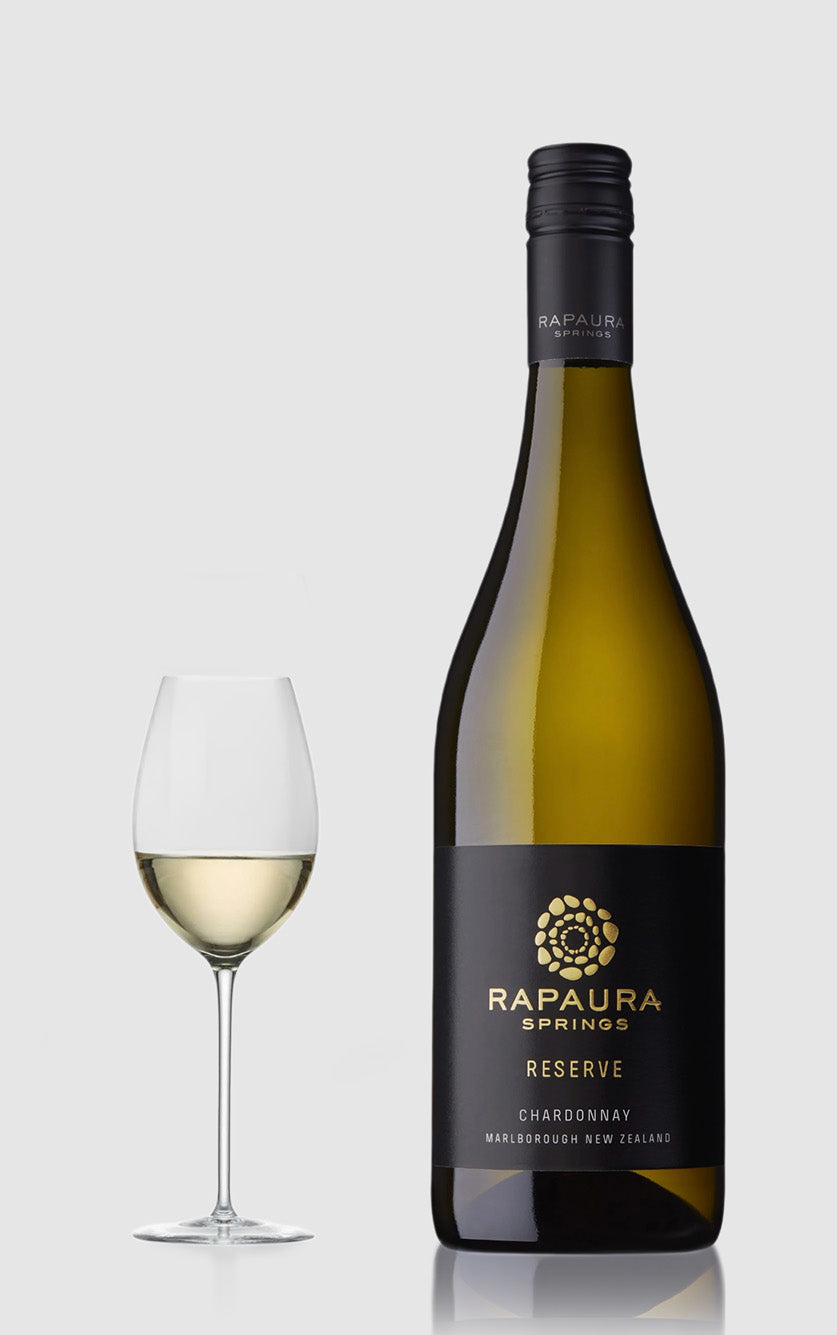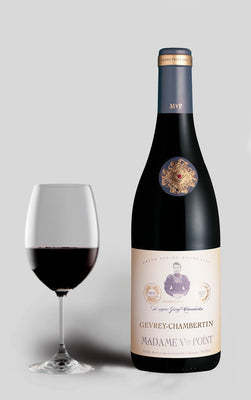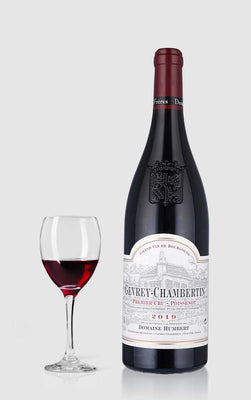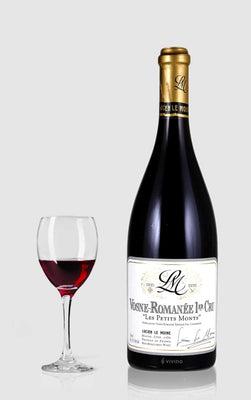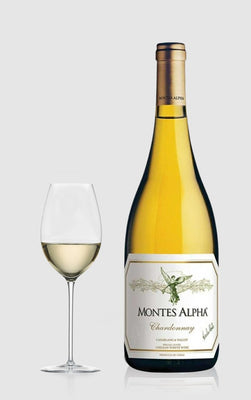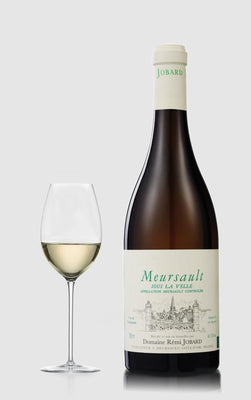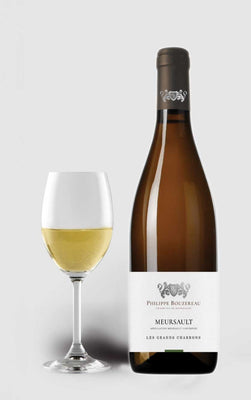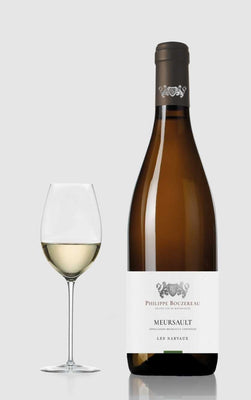Andre kategorier du måske vil kunne lide
Burgundy Wine
-
 ★ 94 – DH Wines★ 4.2 – Vivino
★ 94 – DH Wines★ 4.2 – VivinoDomaine Méo-Camuzet Vosne-Romanée 1st Cru Les Chaumes 2021
Vendor:Domaine Méo-CamuzetRegular price 1.999,00 DKKRegular priceUnit price / per -
 ★ 95 – DH Wines★ 4.2 – Vivino
★ 95 – DH Wines★ 4.2 – VivinoClos De Vougeot Grand Cru Domaine Méo-Camuzet 2021
Vendor:Domaine Méo-CamuzetRegular price 3.495,00 DKKRegular priceUnit price / per -
 ★ 95 – DH Wines★ 4.7 – Vivino
★ 95 – DH Wines★ 4.7 – VivinoMéo Camuzet Corton Charlemagne Grand Cru 2021
Vendor:Méo CamuzetRegular price 3.995,00 DKKRegular priceUnit price / per -
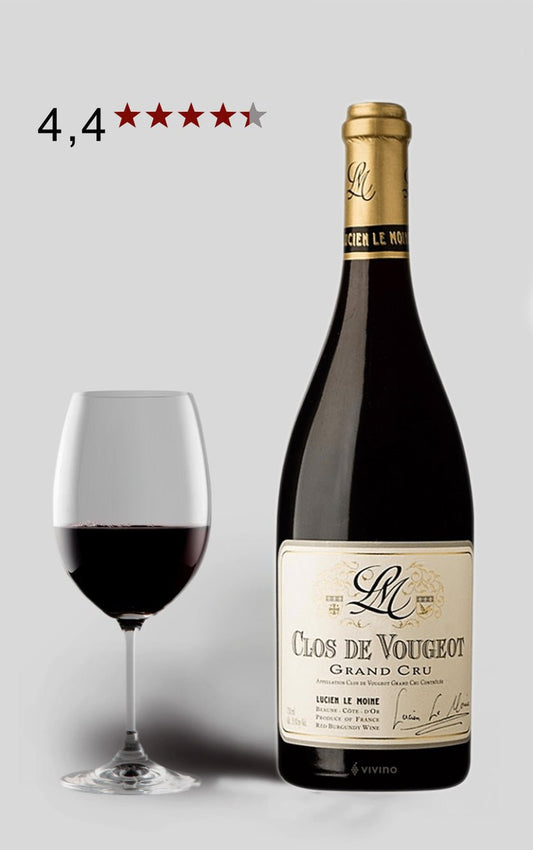 ★ 95 – DH Wines★ 4.8 – Vivino
★ 95 – DH Wines★ 4.8 – VivinoLucien le Moine Clos de Vougeot Grand Cru 2021
Vendor:Lucien Le MoineRegular price 3.995,00 DKKRegular priceUnit price / per -
 ★ 94 – DH Wines★ 4.2 – Vivino
★ 94 – DH Wines★ 4.2 – VivinoLucien le Moine Chambolle-Musigny Premier Cru Les Hauts Doix 2021
Vendor:Lucien Le MoineRegular price 2.749,00 DKKRegular priceUnit price / per -
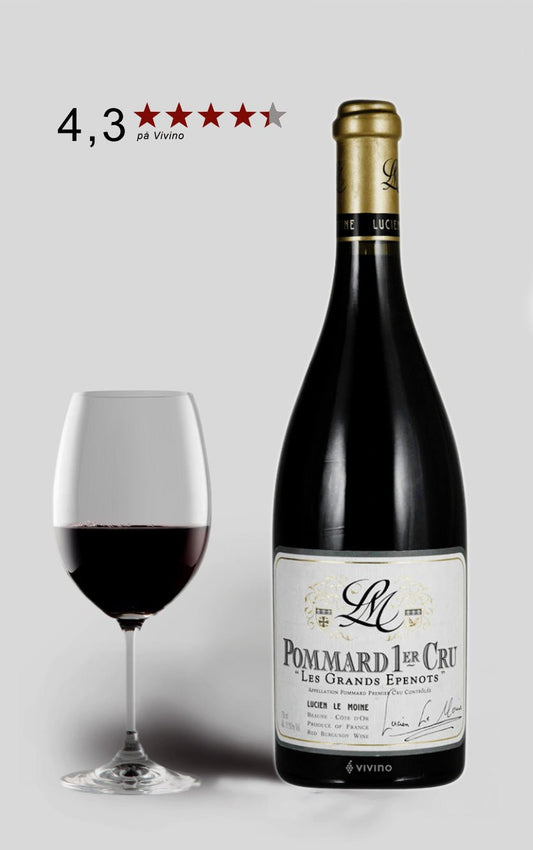 ★ 95 – DH Wines★ 4.2 – Vivino
★ 95 – DH Wines★ 4.2 – VivinoLucien le Moine Pommard 1er Cru 'Les Grands Epenots' 2021
Vendor:Lucien Le MoineRegular price 1.399,00 DKKRegular priceUnit price / per -
 ★ 97 – DH Wines★ 4.1 – Vivino
★ 97 – DH Wines★ 4.1 – VivinoLucien Le Moine Chablis Blanchot 2021
Vendor:Lucien le MoineRegular price 1.749,00 DKKRegular priceUnit price / per -
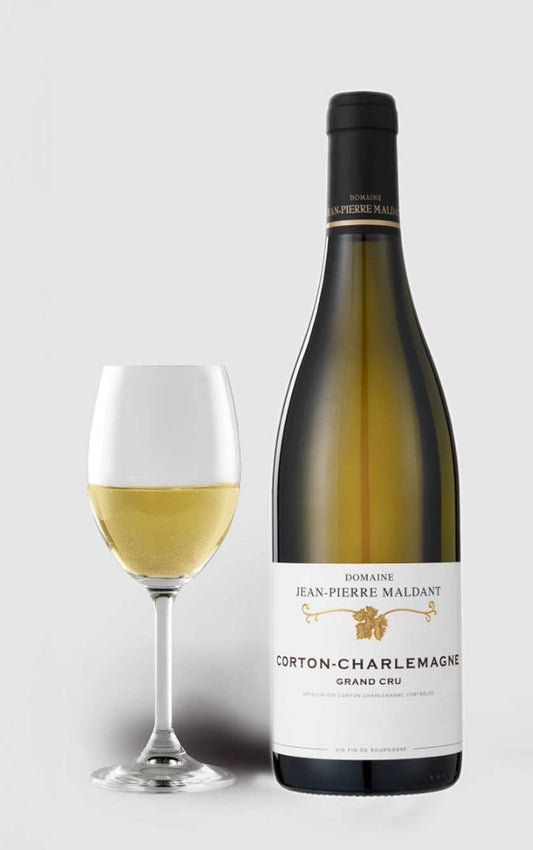 ★ 98 – Robert Parker★ 97 – James Suckling★ 94 – DH Wines★ 92 – Wine Enthusiast★ 4.3 – Vivino
★ 98 – Robert Parker★ 97 – James Suckling★ 94 – DH Wines★ 92 – Wine Enthusiast★ 4.3 – VivinoCorton Charlemagne Grand Cru 2020
Vendor:Domaine Jean Pierre MaldantRegular price 1.499,00 DKKRegular priceUnit price / per -
 ★ 91 – DH Wines★ 4.1 – VivinoSold out
★ 91 – DH Wines★ 4.1 – VivinoSold outChassagne-Montrachet Rouge 2018
Vendor:Charles OrbanRegular price 449,00 DKKRegular priceUnit price / per -
 ★ 94 – DH Wines★ 4.4 – Vivino
★ 94 – DH Wines★ 4.4 – VivinoOliver Leflaive Chassagne-Montrachet Rouge 2018
Vendor:Oliver LeflaiveRegular price 449,00 DKKRegular priceUnit price / per -
 ★ 96 – James Suckling★ 95 – Robert Parker★ 95 – DH Wines★ 94 – Wine Enthusiast★ 4.2 – Vivino
★ 96 – James Suckling★ 95 – Robert Parker★ 95 – DH Wines★ 94 – Wine Enthusiast★ 4.2 – VivinoMorey Coffinet Corton Charlemagne Grand Cru 2018
Vendor:Morey CoffinetRegular price 3.995,00 DKKRegular priceUnit price / per -
 ★ 96 – DH Wines★ 95 – James Suckling★ 94 – Robert Parker★ 93 – Wine Enthusiast★ 4.7 – Vivino
★ 96 – DH Wines★ 95 – James Suckling★ 94 – Robert Parker★ 93 – Wine Enthusiast★ 4.7 – VivinoMéo Camuzet Corton Charlemagne Grand Cru 2020
Vendor:Méo CamuzetRegular price 3.995,00 DKKRegular priceUnit price / per -
 ★ 91 – Wine Enthusiast★ 91 – James Suckling★ 90 – DH Wines★ 4.2 – Vivino
★ 91 – Wine Enthusiast★ 91 – James Suckling★ 90 – DH Wines★ 4.2 – VivinoLupe Cholet, Gevrey-Chambertin, Clos Prieur 2016
Vendor:Lupe-CholetRegular price 749,00 DKKRegular priceUnit price / per -
 ★ 95 – James Suckling★ 94 – Wine Enthusiast★ 94 – DH Wines★ 4.2 – Vivino
★ 95 – James Suckling★ 94 – Wine Enthusiast★ 94 – DH Wines★ 4.2 – VivinoLucien Le Moine Meursault 1st Cru Les Perrières 2020
Vendor:Lucien Le MoineRegular price 2.495,00 DKKRegular priceUnit price / per -
 ★ 92 – DH Wines★ 4.5 – Vivino
★ 92 – DH Wines★ 4.5 – VivinoLucien Le Moine Gevrey-Chambertin 1er Cru 2020
Vendor:Lucien Le MoineRegular price 1.995,00 DKKRegular priceUnit price / per -
 ★ 94 – James Suckling★ 94 – DH Wines★ 4.5 – Vivino
★ 94 – James Suckling★ 94 – DH Wines★ 4.5 – VivinoLucien Le Moine Chambolle-Musigny 1st Cru Les Baudes 2020
Vendor:Lucien Le MoineRegular price 2.295,00 DKKRegular priceUnit price / per -
 ★ 95 – Robert Parker★ 95 – James Suckling★ 94 – Wine Enthusiast★ 94 – DH Wines★ 4.8 – Vivino
★ 95 – Robert Parker★ 95 – James Suckling★ 94 – Wine Enthusiast★ 94 – DH Wines★ 4.8 – VivinoLucien Le Moine Chambolle-Musigny 1st Cru Les Amoureuses 2009
Vendor:Lucien Le MoineRegular price 5.495,00 DKKRegular priceUnit price / per -
 ★ 96 – James Suckling★ 95 – DH Wines★ 93 – Decanter★ 4.5 – Vivino
★ 96 – James Suckling★ 95 – DH Wines★ 93 – Decanter★ 4.5 – VivinoLucien Le Moine Chambolle Musigny 1st Cru Les Amoureuses 2020
Vendor:Lucien Le MoineRegular price 4.995,00 DKKRegular priceUnit price / per -
 ★ 98 – Wine Enthusiast★ 98 – Robert Parker★ 98 – DH Wines★ 97 – James Suckling★ 4.4 – Vivino
★ 98 – Wine Enthusiast★ 98 – Robert Parker★ 98 – DH Wines★ 97 – James Suckling★ 4.4 – VivinoLucien Le Moine Batard Montrachet Grand Cru 2019
Vendor:Lucien Le MoineRegular price 11.995,00 DKKRegular priceUnit price / per -
 ★ 93 – James Suckling★ 93 – DH Wines★ 91 – Wine Enthusiast★ 91 – Decanter★ 4.0 – VivinoSold out
★ 93 – James Suckling★ 93 – DH Wines★ 91 – Wine Enthusiast★ 91 – Decanter★ 4.0 – VivinoSold outLouis Latour Gevrey-Chambertin 2017
Vendor:Louis LatourRegular price 749,00 DKKRegular priceUnit price / per -
 ★ 98 – Robert Parker★ 97 – James Suckling★ 97 – Decanter★ 96 – DH Wines★ 4.3 – Vivino
★ 98 – Robert Parker★ 97 – James Suckling★ 97 – Decanter★ 96 – DH Wines★ 4.3 – VivinoLouis Latour Corton-Charlemagne Grand Cru 2018
Vendor:Louis LatourRegular price 2.995,00 DKKRegular priceUnit price / per -
 ★ 93 – Wine Enthusiast★ 93 – James Suckling★ 92 – Robert Parker★ 91 – DH Wines★ 4.2 – Vivino
★ 93 – Wine Enthusiast★ 93 – James Suckling★ 92 – Robert Parker★ 91 – DH Wines★ 4.2 – VivinoFrançois Carillon Saint-Aubin 1er Cru 2019
Vendor:Frank PhélanRegular price 1.299,00 DKKRegular priceUnit price / per -
 ★ 94 – Wine Enthusiast★ 94 – James Suckling★ 94 – Decanter★ 93 – DH Wines★ 4.2 – Vivino
★ 94 – Wine Enthusiast★ 94 – James Suckling★ 94 – Decanter★ 93 – DH Wines★ 4.2 – VivinoFrançois Carillon Puligny-Montrachet 1´Cru Champ-Gain 2020
Vendor:François CarillonRegular price 1.849,00 DKKRegular priceUnit price / per -
 ★ 94 – DH Wines★ 93 – James Suckling★ 92 – Robert Parker★ 4.0 – Vivino
★ 94 – DH Wines★ 93 – James Suckling★ 92 – Robert Parker★ 4.0 – VivinoFrançois Carillon Chassagne 1´Cru Les Macherelles 2020
Vendor:François CarillonRegular price 1.549,00 DKKRegular priceUnit price / per -
 ★ 93 – Decanter★ 93 – DH Wines★ 91 – Robert Parker★ 4.1 – Vivino
★ 93 – Decanter★ 93 – DH Wines★ 91 – Robert Parker★ 4.1 – VivinoDomaine Remi Jobard Volnay 1er Cru 'Les Santenots' 2018
Vendor:Domaine Remi JobardRegular price 849,00 DKKRegular priceUnit price / per -
 ★ 92 – Robert Parker★ 91 – DH Wines★ 4.1 – Vivino
★ 92 – Robert Parker★ 91 – DH Wines★ 4.1 – VivinoDomaine Remi Jobard Monthelie 1er Cru 'Les Vignes-Rondes' 2018
Vendor:Domaine Remi JobardRegular price 699,00 DKKRegular priceUnit price / per -
 ★ 97 – James Suckling★ 95 – DH Wines★ 93 – Decanter★ 4.3 – Vivino
★ 97 – James Suckling★ 95 – DH Wines★ 93 – Decanter★ 4.3 – VivinoDomaine Morey-Coffinet - Puligny Montrachet 1er Cru Les Pucelles 2018
Vendor:Domaine Morey-CoffinetRegular price 1.599,00 DKKRegular priceUnit price / per -
 ★ 93 – Wine Enthusiast★ 93 – James Suckling★ 93 – Decanter★ 93 – DH Wines★ 4.6 – Vivino
★ 93 – Wine Enthusiast★ 93 – James Suckling★ 93 – Decanter★ 93 – DH Wines★ 4.6 – VivinoDomaine Morey-Coffinet - Corton Grand Cru 2019
Vendor:Domaine Morey-CoffinetRegular price 2.199,00 DKKRegular priceUnit price / per -
 ★ 94 – DH Wines★ 93 – Robert Parker★ 93 – James Suckling★ 92 – Decanter★ 4.2 – Vivino
★ 94 – DH Wines★ 93 – Robert Parker★ 93 – James Suckling★ 92 – Decanter★ 4.2 – VivinoDomaine Morey-Coffinet - Chassagne Montrachet Blanc 2018
Vendor:Domaine Morey-CoffinetRegular price 649,00 DKKRegular priceUnit price / per -
 ★ 97 – Decanter★ 95 – James Suckling★ 94 – Wine Enthusiast★ 94 – DH Wines★ 93 – Robert Parker★ 4.4 – Vivino
★ 97 – Decanter★ 95 – James Suckling★ 94 – Wine Enthusiast★ 94 – DH Wines★ 93 – Robert Parker★ 4.4 – VivinoDomaine Morey-Coffinet - Chassagne Montrachet 1Cru "La Romanée" 2019
Vendor:Domaine Morey-CoffinetRegular price 999,00 DKKRegular priceUnit price / per -
 ★ 98 – Robert Parker★ 97 – Wine Enthusiast★ 97 – James Suckling★ 97 – DH Wines★ 93 – Decanter★ 4.7 – Vivino
★ 98 – Robert Parker★ 97 – Wine Enthusiast★ 97 – James Suckling★ 97 – DH Wines★ 93 – Decanter★ 4.7 – VivinoDomaine Morey-Coffinet - Batard Montrachet Grand Cru 2019
Vendor:Domaine Morey-CoffinetRegular price 3.999,00 DKKRegular priceUnit price / per -
 ★ 97 – Robert Parker★ 96 – Decanter★ 95 – DH Wines★ 4.8 – Vivino
★ 97 – Robert Parker★ 96 – Decanter★ 95 – DH Wines★ 4.8 – VivinoDomaine Morey-Coffinet - Batard Montrachet Grand Cru 2018
Vendor:Domaine Morey-CoffinetRegular price 3.999,00 DKKRegular priceUnit price / per -
 ★ 94 – Wine Enthusiast★ 94 – Robert Parker★ 94 – James Suckling★ 94 – Decanter★ 94 – DH Wines★ 4.5 – Vivino
★ 94 – Wine Enthusiast★ 94 – Robert Parker★ 94 – James Suckling★ 94 – Decanter★ 94 – DH Wines★ 4.5 – VivinoDomaine Méo-Camuzet Vosne Romanée 1 Cru Les Chaumes 2020
Vendor:Domaine Méo-CamuzetRegular price 2.995,00 DKKRegular priceUnit price / per -
 ★ 93 – Wine Enthusiast★ 92 – James Suckling★ 91 – DH Wines★ 88 – Robert Parker★ 4.3 – Vivino
★ 93 – Wine Enthusiast★ 92 – James Suckling★ 91 – DH Wines★ 88 – Robert Parker★ 4.3 – VivinoDomaine Méo-Camuzet Marsannay 2020
Vendor:Domaine Méo-CamuzetRegular price 799,00 DKKRegular priceUnit price / per -
 ★ 92 – Wine Enthusiast★ 91 – DH Wines★ 4.3 – Vivino
★ 92 – Wine Enthusiast★ 91 – DH Wines★ 4.3 – VivinoDomaine Méo-Camuzet Fixin 2020
Vendor:Domaine Méo-CamuzetRegular price 799,00 DKKRegular priceUnit price / per -
 ★ 98 – DH Wines★ 4.2 – Vivino
★ 98 – DH Wines★ 4.2 – VivinoDomaine Méo-Camuzet Clos De Vougeot Gr. Cru 2020
Vendor:Domaine Méo-CamuzetRegular price 3.495,00 DKKRegular priceUnit price / per -
 ★ 94 – James Suckling★ 94 – DH Wines★ 93 – Robert Parker★ 93 – Decanter★ 4.4 – Vivino
★ 94 – James Suckling★ 94 – DH Wines★ 93 – Robert Parker★ 93 – Decanter★ 4.4 – VivinoDomaine Méo-Camuzet Chambolle-Musigny 1 Cru 2020
Vendor:Domaine Méo-CamuzetRegular price 2.295,00 DKKRegular priceUnit price / per -
 ★ 93 – DH Wines★ 91 – James Suckling★ 88 – Robert Parker★ 4.1 – Vivino
★ 93 – DH Wines★ 91 – James Suckling★ 88 – Robert Parker★ 4.1 – VivinoDomaine Méo Camuzet Bourgogne Blanc 2020
Vendor:Domaine Méo CamuzetRegular price 599,00 DKKRegular priceUnit price / per -
 ★ 94 – Wine Enthusiast★ 94 – DH Wines★ 4.1 – Vivino
★ 94 – Wine Enthusiast★ 94 – DH Wines★ 4.1 – VivinoDomaine Les Parcellaires de SaulxCharmes Chambertin Grand Cru 2015
Vendor:Domaine Les Parcellaires de SaulxRegular price 1.999,00 DKKRegular priceUnit price / per -
 ★ 93 – James Suckling★ 92 – DH Wines★ 3.9 – Vivino
★ 93 – James Suckling★ 92 – DH Wines★ 3.9 – VivinoDomaine Jean-Pierre Maldant Corton Les Grandes Lolieres Grand Cru 2015
Vendor:Domaine Jean-Poul PicardRegular price 995,00 DKKRegular priceUnit price / per -
 ★ 93 – Wine Enthusiast★ 92 – DH Wines★ 4.2 – Vivino
★ 93 – Wine Enthusiast★ 92 – DH Wines★ 4.2 – VivinoDomaine Jean-Pierre Maldant Aloxe-Corton 1er Cru 2020
Vendor:Domaine Jean-Pierre MaldantRegular price 699,00 DKKRegular priceUnit price / per0,00 DKKSale price 699,00 DKK -
 ★ 94 – Wine Enthusiast★ 94 – Decanter★ 94 – DH Wines★ 93 – Robert Parker★ 93 – James Suckling★ 4.1 – Vivino
★ 94 – Wine Enthusiast★ 94 – Decanter★ 94 – DH Wines★ 93 – Robert Parker★ 93 – James Suckling★ 4.1 – VivinoDomaine Gros Frère et Soeur Clos de Vougeot Grand Cru 2016
Vendor:Domaine Gros Frère et SoeurRegular price 1.799,00 DKKRegular priceUnit price / per -
 ★ 95 – James Suckling★ 94 – Robert Parker★ 93 – Wine Enthusiast★ 92 – Decanter★ 91 – DH Wines★ 4.1 – Vivino
★ 95 – James Suckling★ 94 – Robert Parker★ 93 – Wine Enthusiast★ 92 – Decanter★ 91 – DH Wines★ 4.1 – VivinoDomaine François Lumpp Givry 1er Cru 'Clos du Cras Long' 2018
Vendor:Domaine François LumppRegular price 399,00 DKKRegular priceUnit price / per -
 ★ 93 – DH Wines★ 92 – Wine Enthusiast★ 90 – James Suckling★ 4.5 – Vivino
★ 93 – DH Wines★ 92 – Wine Enthusiast★ 90 – James Suckling★ 4.5 – VivinoDomaine des Terres de Velle Meursault Les Luchets Vieilles Vignes 2016
Vendor:Domaine des Terres de VelleRegular price 499,00 DKKRegular priceUnit price / per -
 ★ 97 – Wine Enthusiast★ 97 – DH Wines★ 96 – Decanter★ 95 – Robert Parker★ 95 – James Suckling★ 4.6 – Vivino
★ 97 – Wine Enthusiast★ 97 – DH Wines★ 96 – Decanter★ 95 – Robert Parker★ 95 – James Suckling★ 4.6 – VivinoDomaine de Montille Malconsorts Cuvee Christiane 2017
Vendor:Domaine de MontilleRegular price 6.495,00 DKKRegular priceUnit price / per -
 ★ 91 – DH Wines★ 4.2 – Vivino
★ 91 – DH Wines★ 4.2 – VivinoDomaine Chanzy Echezeaux Grand Cru 2013
Vendor:Domaine ChanzyRegular price 1.499,00 DKKRegular priceUnit price / per -
 ★ 93 – James Suckling★ 93 – DH Wines★ 92 – Wine Enthusiast★ 4.1 – Vivino
★ 93 – James Suckling★ 93 – DH Wines★ 92 – Wine Enthusiast★ 4.1 – VivinoDomaine Chanzy Clos De Vougeot Grand Cru 2016
Vendor:Domaine ChanzyRegular price 1.499,00 DKKRegular priceUnit price / per -
 ★ 94 – Decanter★ 93 – James Suckling★ 91 – DH Wines★ 4.4 – Vivino
★ 94 – Decanter★ 93 – James Suckling★ 91 – DH Wines★ 4.4 – VivinoDomaine Belleville Rully La Pucelle' 1 Cru 2020
Vendor:Domaine Belleville-10% rabatRegular price 449,00 DKKRegular priceUnit price / per499,00 DKKSale price 449,00 DKKSale
Collection: Burgundy Wine
Burgundy is known as the epicenter of the wine world for finesse, minerality and complexity. The region in eastern France is home to some of the world's most sought-after wines, made with a deep respect for terroir and tradition. Two grape varieties dominate here: Pinot Noir and Chardonnay .
Geography and division of Burgundy
Burgundy is divided into five main areas, each with its own geological and climatic characteristics:
- Chablis – calcareous soil and cool climate produce crisp, mineral Chardonnay wines.
- Côte de Nuits – known for the most iconic Pinot Noir wines in the world.
- Côte de Beaune – home to both world-class white wines and elegant red wines.
- Côte Chalonnaise – often overlooked area with great value and authentic character.
- Mâconnais – fresh, floral white wines and increasing quality from southern Burgundy.
These sub-regions together contain hundreds of villages and lieu-dits, where the character of the wine is shaped by small variations in soil, exposure and microclimate.
Grapes and styles
Pinot Noir in Burgundy creates red wines with light color, fine acidity, delicate tannins and aromatic notes of cherry, forest floor and spices. The wines develop beautifully with age, revealing layers of complexity.
Chardonnay in Burgundy ranges from tight and mineral in Chablis to full-bodied and creamy in Meursault and Puligny-Montrachet. The style depends largely on the appellation and the winemaker's approach to cask, malolactic fermentation and harvest time.
Appellations and quality levels
Burgundy uses a hierarchical classification system divided into four levels:
- Regional – e.g. “Bourgogne Rouge” or “Bourgogne Blanc”. Introduction to the style.
- Village – wines from specific villages such as Gevrey-Chambertin or Meursault.
- Premier Cru – fields classified for special quality and character.
- Grand Cru – the best vineyards in the region, such as Montrachet and Chambertin.
These levels reflect both terroir and tradition, and have a great impact on price, style and aging potential.
Producers and development in the region
Burgundy is home to iconic domaines with centuries of history and new generations of winemakers experimenting with organic, biodynamic and low-intervention methods. Many producers today work with low yields, hand-harvesting and natural fermentation to highlight the unique characteristics of the vineyard.
The region's growing popularity, combined with small quantities and high demand, has made Burgundy a central focal point for collectors and wine enthusiasts worldwide.
Frequently asked questions about Burgundy wine
What is the difference between Burgundy and Bordeaux wine?
Burgundy wines are typically made from a single grape (Pinot Noir or Chardonnay) and are highly expressive of terroir. Bordeaux wines are blends and focus more on structure, aging, and tannin. Burgundy is generally more elegant and subtle, while Bordeaux is often more powerful and structured.
Is Burgundy wine good to store?
Yes, Premier Cru and Grand Cru wines in particular have excellent aging potential. Red wines develop tertiary notes of leather and forest floor, while white wines acquire nutty and honeyed tones over time.
What does a typical Pinot Noir from Burgundy taste like?
A typical Pinot Noir from Burgundy has notes of red berries, flowers, light spice and an earthy complexity. The tannins are fine and elegant, and the acidity is fresh, giving the wine a long life and great food-friendliness.
- Choosing a selection results in a full page refresh.
- Opens in a new window.
